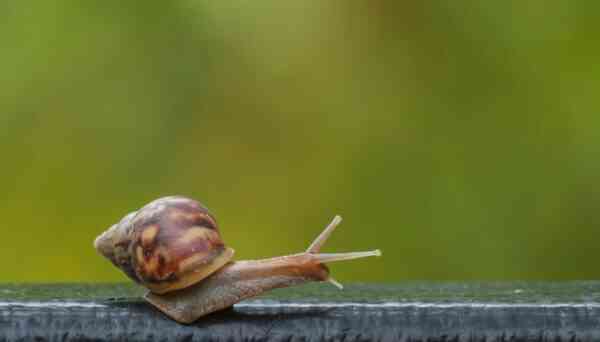Many do not even notice these little creatures, snails, whose slowness has become proverbial. They have been living on Earth for a long time, and over millions of years evolution has practically not modified them – apparently, mother nature believes that they are already well adapted for survival. It’s hard to argue with this, since snails have been living on our planet much longer than humans, and, apparently, quite successfully. And in some countries they are even a delicacy, and are actively used in local cooking.
Interesting facts about snails
- It was the snails that had the honor of becoming the first real cyborgs – a group of scientists during the experiment managed to transfer the neurons of the experimental individual to a computer chip.
- Both salt and sugar are very poisonous to snails.
- Snails contain more proteins than chicken eggs.
- The British traditionally have such a folk sport as snail races for speed. So that they crawl where they need to, paths are “drawn” on the table in front of them with lettuce leaves.
- The nervous system of snails contains only about 20,000 neurons. In the human brain, for example, there are billions of neurons (interesting facts about the brain).
- The average speed of movement of the snail does not exceed 6-7 centimeters per minute.
- In snails of the same species, the color of the shell can differ significantly – it depends on the menu of these creatures, as well as on other living conditions.
- Usually snails do not drink water, but simply absorb it with the entire surface of their body.
- These creatures are surprisingly strong for their size. They can easily carry 8-10 times their own weight.
- The snail’s funny horns are its olfactory organs. In fact, they are a nose turned inside out.
- Most species of snails are hermaphrodites and do not need partners in order to reproduce.
- All types of snails are deaf. They simply do not have hearing organs.
- Giant sea snails live in Australia, which, with a shell length of up to half a meter, can weigh over 15-17 kg, which makes them one of the largest mollusks in the world (interesting facts about mollusks).
- The eyesight of snails is very weak, they can only distinguish between light and shadow. However, they have a very keen sense of smell, and at a distance of a couple of meters they easily detect food.
- To communicate with relatives, snails touch each other.
- By the number of teeth, it is snails that occupy the first place on our planet. They have about 25,000 of them! True, all their teeth are so small that they need to be looked at under a microscope.
- These creatures do not know how to chew, so they simply grind food particles to a gruel state.
- The more calcium in the diet snail, the stronger its shell.
- The shell of a snail is almost always twisted clockwise. Individuals with a shell that twists counterclockwise are extremely rare.
- To facilitate the process of movement, the snail creates a kind of mucus cushion between its sole and the surface, and crawls along it.
- Many species of snails live for 14-15 years, which is comparable to the life expectancy of animals such as lynx or a tiger (interesting facts about tigers).
- Even fairly large snails can safely crawl along a sharp knife blade without getting hurt.
- In the event of the onset of cold weather, they can fall into long hibernation, for up to 5-6 months. While hibernating, snails can successfully tolerate temperatures down to -100 degrees or more.
- During the experiments, scientists have found that snails learn, learn from experience and apply it in practice, which indicates that they have a certain intelligence.
- They can hide entirely in their own shell in case of danger.
- Charles Darwin, the creator of the theory of evolution, cited snails as an example of a life form that can adapt to almost any environment.
- The first snails appeared on earth about 600 million years ago, long before most dinosaurs ever roamed our planet.
- Snails cannot stand caffeine – its 0.01% content discourages them eat food, and a 1% solution is completely capable of killing them.
- The muscle designed to hide the snail inside the shell covers its entire body (interesting facts about muscles).
- Snails are by no means vegetarians. They willingly include various larvae and worms in their diet.
